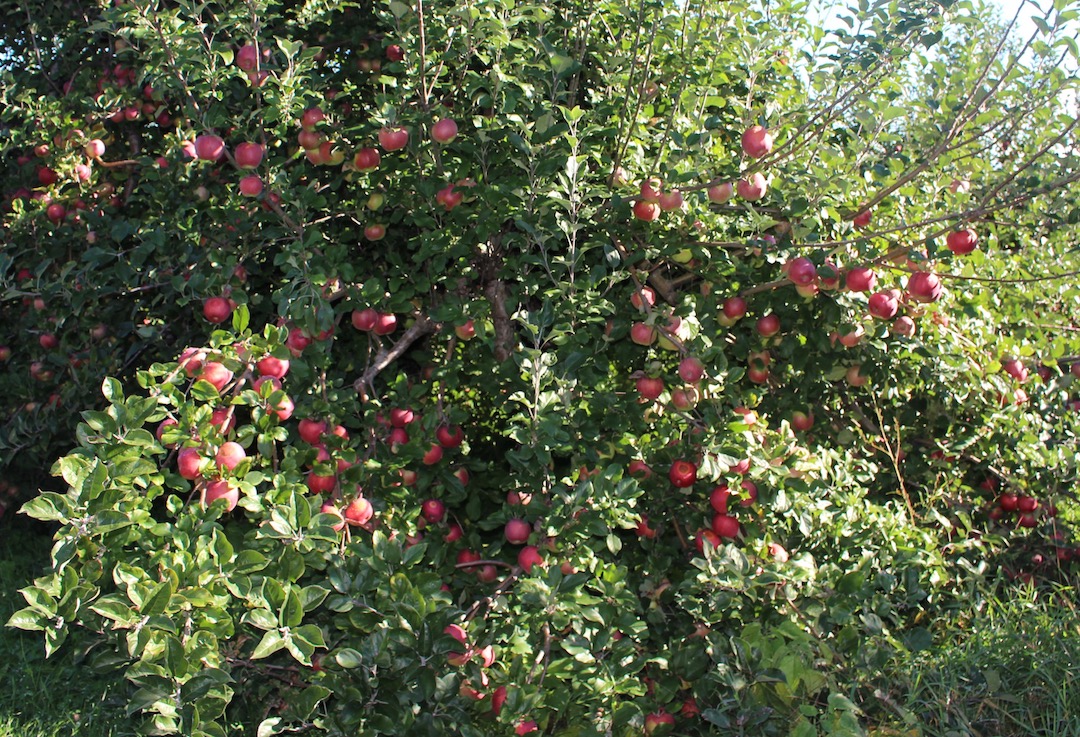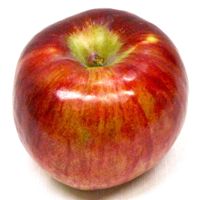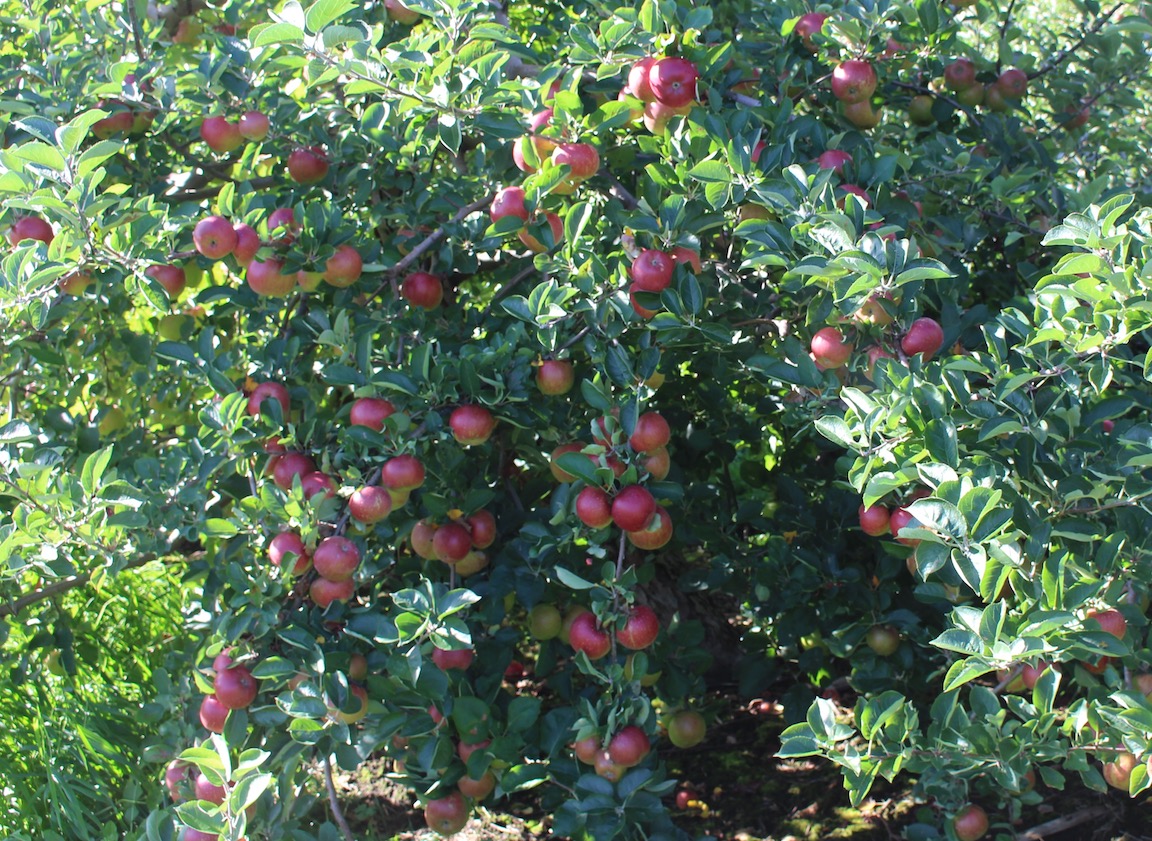

FEW DISHES are as satisfying and easy to prepare as a stir-fry. Just coat the bottom of a skillet with olive oil, turn the stovetop to medium, and as it heats chop up some onion or garlic (or both). That’s when it gets interesting.
Almost any vegetable can work in a stir-fry, and it presents an opportunity for creativity and unusual combinations. I usually begin with what’s in my refrigerator. The other day that included two small onions, a red pepper, and some mushrooms. It was a good start, but lacked a certain élan. That’s when I saw a beautiful striped Cortland apple sitting on the shelf. It added the perfect touch: rich flavor with a touch of sweetness, a firm texture, and good red-and-green color.
The merging of several flavors is what makes a stir-fry special, and the vegetables are cooked just long enough to lose their crunch but remain pleasingly crisp. Each vegetable I used brought a little something to the dish besides flavor. I sliced the onion in rounds, the pepper into thin strips, and chopped the mushrooms. I cored the apple and cut it into half-inch wedges. The aroma as the vegetables and apple cooked was intoxicating.

Cortland has been one of America’s most celebrated apples for more than a century now, for good reason. It is a good-sized apple and is equally good eaten fresh or cooked. This has been an outstanding year for Cortland in New England orchards; mine came from Nestrovich Fruit Farm in Granville, Massachusetts. The apple greatly expanded the range of flavors in the stir-fry, its sweet tang playing nicely off the sharp pepper and onion without overwhelming the milder mushroom.
I cooked a mix of long-grain and wild rice while the vegetables cooked, and near the end I added salt and pepper to the stir-fry and a package of tempeh, cut into small cubes (any meat or other protein can be used to give the stir-fry more heft; I chose tempeh because it was on hand, and I enjoy its distinctive flavor and texture).
For those unfamiliar, tempeh is made from cooked and slightly fermented soybeans and pressed into a dense patty. It has a pleasing, nutty flavor and is high in protein, relatively low-fat, and cholesterol-free.
A stir-fry is a chance to be innovative, with new and different combinations of vegetables. Depending on the available ingredients, each one may be different. Here’s the one I made the other night. With the tempeh and served on a bed of rice, it made a meal. It was delicious.
Apple Stir-Fry

1-2 T olive oil
2 small onions, sliced
1 red pepper, cut into strips
6 mushrooms, sliced
1 large or 2 small Cortland or other New England apple, cored and cut into wedges
1 8-oz. package tempeh, cut into small, bite-sized cubes
salt and pepper to taste
Add olive oil to a skillet, and place on stovetop on medium heat. When hot, add chopped vegetables one at a time, beginning with onions and peppers, ending with mushrooms and apple, stirring regularly, for 5-7 minutes.
When vegetables begin to soften, added tempeh or other protein, salt and pepper.
When vegetable reach desired texture, remove from heat. Serve on long grain-wild rice mix.
***

SOME YEARS you have them, some years you don’t.
There are many reasons that Baldwin and Northern Spy — two of America’s most popular apples at the time Cortland was introduced in 1898 — have had a different fate, surviving now as prized heirlooms rather than mass produced.
These two New England natives (Baldwin from Wilmington, Massachusetts, in 1740, Northern Spy in Salisbury, Connecticut in 1800) can be challenging to grow, and are more susceptible to certain apple diseases than other varieties. They are not as cold-hardy as some apples; Baldwin trees in particular were devastated in New England during the bitter cold winter of 1933-34.
But one of the main flaws of both varieties as commercial apples is that they tend to be biennial bearers, meaning that they can have a great crop one year, and hardly any apples the next. They are such great tasting apples, though, that they persist to this day in many New England orchards. They excel for fresh eating and baking, and both are good keepers, lasting much of the winter in proper storage.
Baldwin and Northern Spy are late-season apples, and they are just approaching ripeness now. At some orchards, they will not be harvested for another week or more, but at places like Pine Hill Orchards in Colrain, Massachusetts, there is a good crop, and the picking should begin soon.
